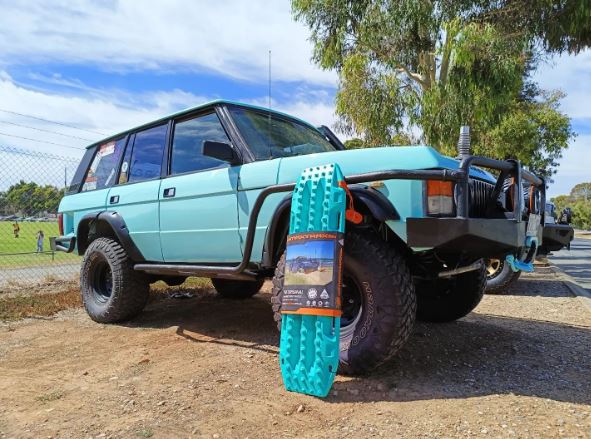We’ve faced and overcome countless challenges off the beaten path, and if there’s one piece of equipment we swear by, it’s the 4×4 recovery board. These essential tools have been part of our kit for over decades. Versatile? Absolutely. Reliable? Without question. The convenience of their lightweight and simple design belies their indispensable nature when tackling rugged terrain.
We think of recovery boards as a threefold solution: They offer incredible traction, surpassing the grip of wet rocks, slick mud, or packed snow. They work as floatation devices, preventing my 4WD from sinking into soft ground like sand or muck. And they are the key to gaining clearance, boosting the wheels – and by extension, the entire vehicle – over obstructive elements like protruding rocks.
What fascinates me about these rescue tools is their adaptability to an array of environments. Whether I’m steering through sandy dunes, navigating muddy trails, or cutting across snowy landscapes, recovery boards prove their worth. Crafted from durable materials like robust plastic, their textured surfaces grip tires firmly.
Indeed, the benefit of 4×4 recovery boards in enabling a solo escape from tricky situations cannot be understated. The alternatives – resorting to a winch. When I have my trusted boards with me, I feel a sense of self-reliance and readiness for whatever lies ahead.
Storing and transporting these life-savers is a breeze, too. Their design allows them to be tucked away neatly, occupying minimal space. Often, they come with their own bags, making them even more convenient to handle. This compact profile is misleading – despite their size, recovery boards are mighty allies, capable of supporting a variety of vehicles through an array of challenging landscapes.
Mastering Vehicle Recovery: Tips and Techniques for 4×4 Recovery Board Use
Understanding the terrain and the challenges you may face is the first step towards mastering vehicle recovery with 4×4 recovery boards. Whether you’re navigating deep ruts, slick snow, stubborn mud, or shifting sands, the right approach and technique are crucial for a smooth and safe exit. Preparing the terrain, such as digging to position the boards correctly, can make a significant difference in the efficiency of the recovery boards.
Mud behaves differently than sand, and both are unlike snow; recognizing the unique demands of each terrain and adjusting your use of recovery boards accordingly is essential. For instance, creating grooves in mud for the boards to sit in or clearing sand from under the tires can be game-changers.
While the recovery boards are a reliable tool, they’re not magic wands. You must exert the effort to set them up properly, which sometimes includes building tracks before laying down the boards or focusing them on one side of the vehicle, depending on the situation.
But recovery boards aren’t just about being stuck; they’re about prevention too. Employ them to cross over potentially difficult terrain, maintaining momentum and avoiding a trap in the first place.
When it comes to storing and transporting your recovery boards, look for models that come with a carrying bag for convenience and to keep them together. Compact, lightweight designs that can be easily attached to your vehicle also ensure that your boards are always within reach when you need them most.
Your experiences, both good and challenging, serve as the best lessons when handling tricky situations. By sharing tales of effective recovery board use, I aim to encourage others to be prepared and to emphasize the importance of experience in off-road recovery.
Last but not least, remain vigilant about safety and commit to responsible use of the environment. Off-roading is a privilege that comes with the responsibility to leave no trace and make certain that our adventures today don’t harm our ability to explore tomorrow.

These are cool, better than trying to find logs!
Thank you for the reply. Yes they definitely are
Hi Sheryl
What an extremely interesting post. I’m from the UK and have owned a couple of Landrovers which have been off the beaten track quite a few times. Although I was not a member of an off-roading club. One time I remember I got stuck in the mud while the tide was out with all 4 wheels spinning. We managed to get out just before the tide got to us with assistance of a 360° excavator that happened to be digging up the road about a mile away. I had never heard of recovery boards until your post and if I ever buy another disco (discovery) I will definitely get a pair of recovery boards as part of the kit.
Thank you for the reply. Yes we have a d1 and d2, this is our daughters rrc. They are very handy to have when you 4×4 by yourself. Cheers
Very interesting! This is the first time reading about 4×4 Vehicle Recovery Boards. They seems very useful.
Thank you for your comment. Yes they are a great idea when you’re by yourself